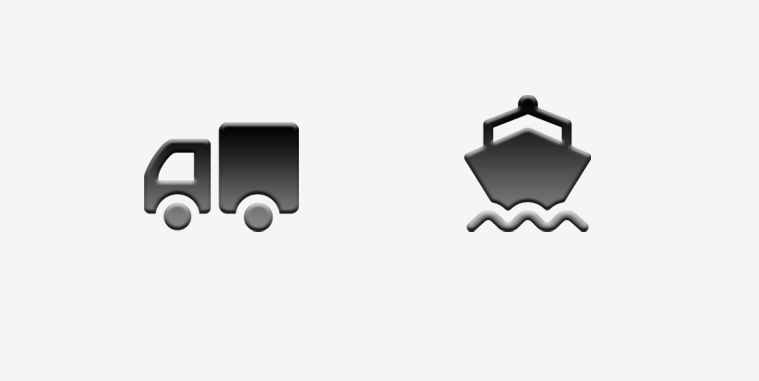1、 Background:
The foundation of dangerous goods regulations is the United Nations Model Regulations, which are elaborated and defined by an international committee, the United Nations Economic Commission for Europe (UNECE). Based on this, countries have incorporated their own laws according to their specific transportation issues.
The headquarters of the United Nations Expert Committee on the Transport of Dangerous Goods is located in Geneva. This expert committee is divided into two sub committees: one is responsible for developing the United Nations Model Regulations, known as the 'Orange Book,' and the United Nations Manual of Tests and Criteria. Another subcommittee is developing the Globally Harmonized System of Classification and Labeling of Chemicals (GHS).
Directly under the United Nations are the International Civil Aviation Organization (ICAO) and the International Maritime Organization (IMO).
Mode Of Transport | Organization/Convention | Rule |
air transport | (ICAO) | ICA0 Technical Guidance(TI,Technical Instructions) |
(IATA) | (DGR,Dangerous Good Regulations)(IATA's corresponding regulations for ICAO TI) |
sea transportation | (IMO) | (IMDG,International Maritime Dangerous Goods) |
road transport | (UNECE,UN Economic Commission for Europe) | (ADR,Accord européen relative au transport international des marchandises Dangereuses par Route) |
railway transportation | (OTIF,Intergovernmental Organization for International Carriage by Rail) | (RID,Regulations concerning the International Carriage of Dangerous Goods by Rail) |
inland water transportation | (UNECE) | European Agreement on the International Carriage of Dangerous Goods by Inland Waters(ADN,Accord européen relative au transport international des marchandises Dangereuses par voices de Navigation interieures) |


2、 What testing and services can Youruite Testing provide for battery shipment?
1. UN38.3 Test Report
2. Cargo transportation condition appraisal report (air freight, sea freight, railway, highway)
3. Cargo Hazard Identification Report (Hazard Classification and Identification Report)
Note: The cargo transportation condition appraisal certificate is for transportation, while the cargo danger appraisal certificate is for goods, but the cargo danger appraisal certificate is a prerequisite for the cargo transportation condition appraisal certificate.
4. MSDS Report/SDS Report
Material Safety Data Sheet
Safety Data Sheet (SDS)
5. GHS Label Preparation Report
6. Transportation Packaging Safety Test Report
3、 Why choose Yourit testing?
1. An experienced technical team provides you with the reports, certificates, and related technical services required for one-stop battery shipment.
2. Professional testing equipment and venue, with a wide coverage, capable of testing large batteries.
3. With complete qualifications and smooth channels, we can quickly and efficiently assist you in solving shipping related issues.
4. Strong technical support capabilities, familiar with policies/regulations, familiar with testing standards, and rich experience in rectification.
5. Numerous successful cooperation cases.


UN38.3 Test Report
Lithium batteries need to comply with the Dangerous Goods Regulations (DGR) of the International Navigation Association (IATA) for air transportation, and the International Maritime Dangerous Goods Regulations (IMDG) of the International Maritime Organization for maritime transportation. According to current regulations, the prerequisite for the transportation of lithium batteries is to have a test report that meets the requirements of UN38.3, as well as a cargo transportation condition appraisal report that proves compliance with the new version of DGR and IMDG regulations. If necessary, a 1.2m drop test report must also be provided.
Cargo Transportation Condition Appraisal Report
When goods are transported by air, water, road, or railway, in order to ensure transportation safety, it is necessary to understand the transportation hazards of the goods. The appraisal of goods transportation conditions is to make appraisal and suggestions on the transportation safety of goods based on domestic and foreign regulations and standards related to the transportation of dangerous goods.
There are special and strict requirements internationally for the packaging, stowage, isolation, loading and unloading, management, transportation conditions, and fire emergency measures of exported dangerous goods. The identification of packaging containers for export dangerous goods aims to ensure that the packaging containers containing export dangerous goods comply with relevant requirements. Dangerous goods using packaging containers that have not been identified or have been identified as unqualified are not allowed to be exported.
Dangerous Goods Identification Certificate
In order to ensure transportation safety, it is necessary to understand the dangers of goods in air transportation, road transportation, railway transportation, and waterway transportation. The cargo hazard identification certificate/hazard characteristic classification and identification report is used to determine whether the submitted samples belong to dangerous goods through laboratory testing or evaluation.
Note: The cargo transportation condition appraisal certificate is for transportation, while the cargo danger appraisal certificate is for goods, but the cargo danger appraisal certificate is a prerequisite for the cargo transportation condition appraisal certificate.
MSDS Report/SDS Report
MSDS: Material Safety Data Sheet is a document used by chemical manufacturers and importers to elucidate the physical and chemical properties (such as pH value, flash point, flammability, reactivity, etc.) of chemicals and the potential hazards to the health of users (such as carcinogenicity, teratogenicity, etc.).
Also known as Safety Data Sheet (SDS) in Europe. The International Organization for Standardization (ISO) uses SDS terminology, while many countries in the United States, Canada, Australia, and Asia use MSDS terminology.
GHS Label Preparation Report
The Globally Harmonized System of Classification and Labeling of Chemicals (GHS) is a normative document published by the United Nations to guide countries in controlling chemical hazards and protecting human health and the environment. The 2002 United Nations World Summit on Sustainable Development encouraged countries to implement GHS by 2008. The member states of the APEC Conference have pledged to implement GHS from 2006 onwards. In 2011, the United Nations Economic and Social Council Resolution 25 requested the Secretariat of the GHS Expert Subcommittee to invite governments that have not implemented GHS to implement GHS through their domestic legislative procedures as soon as possible.